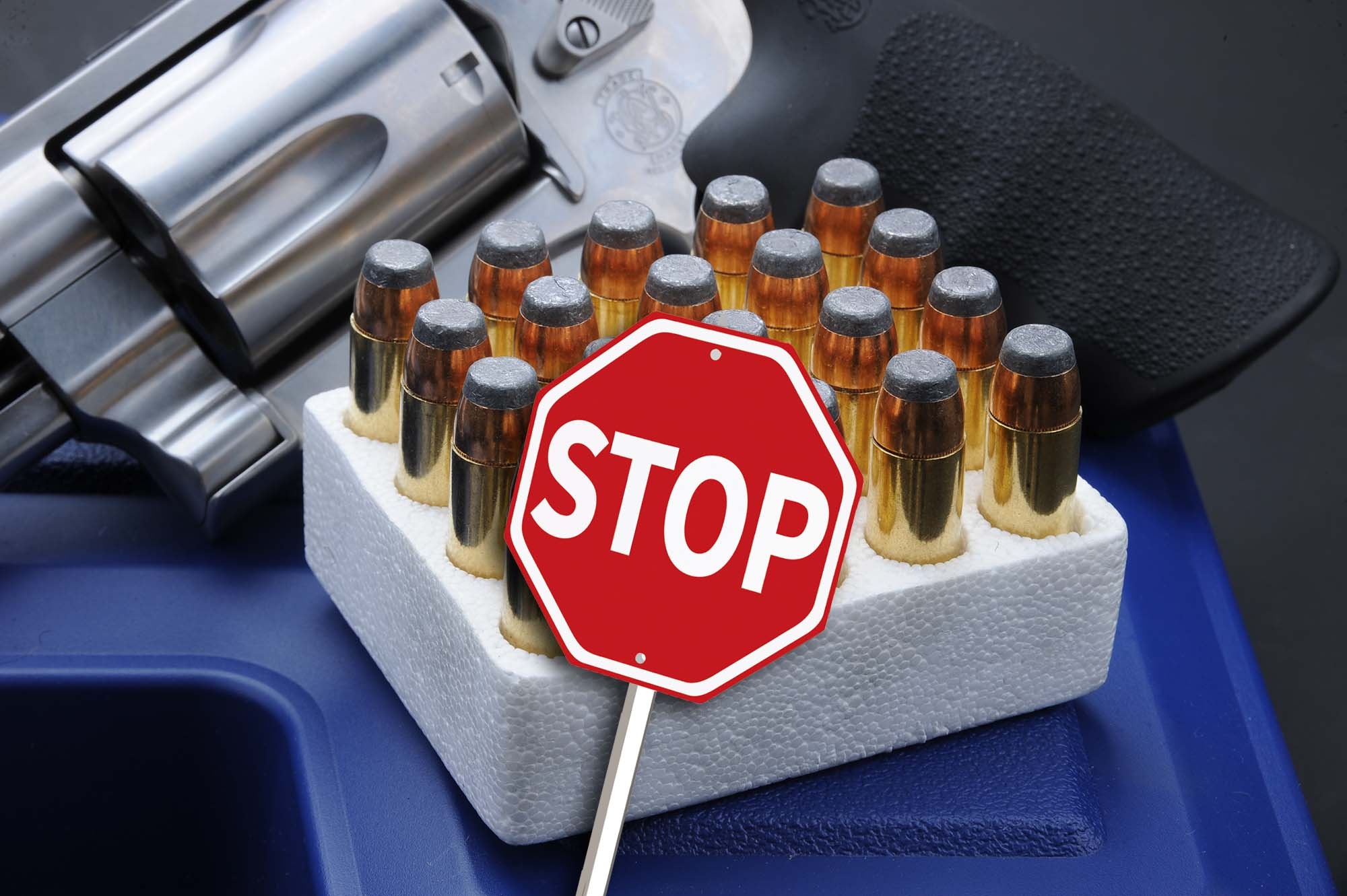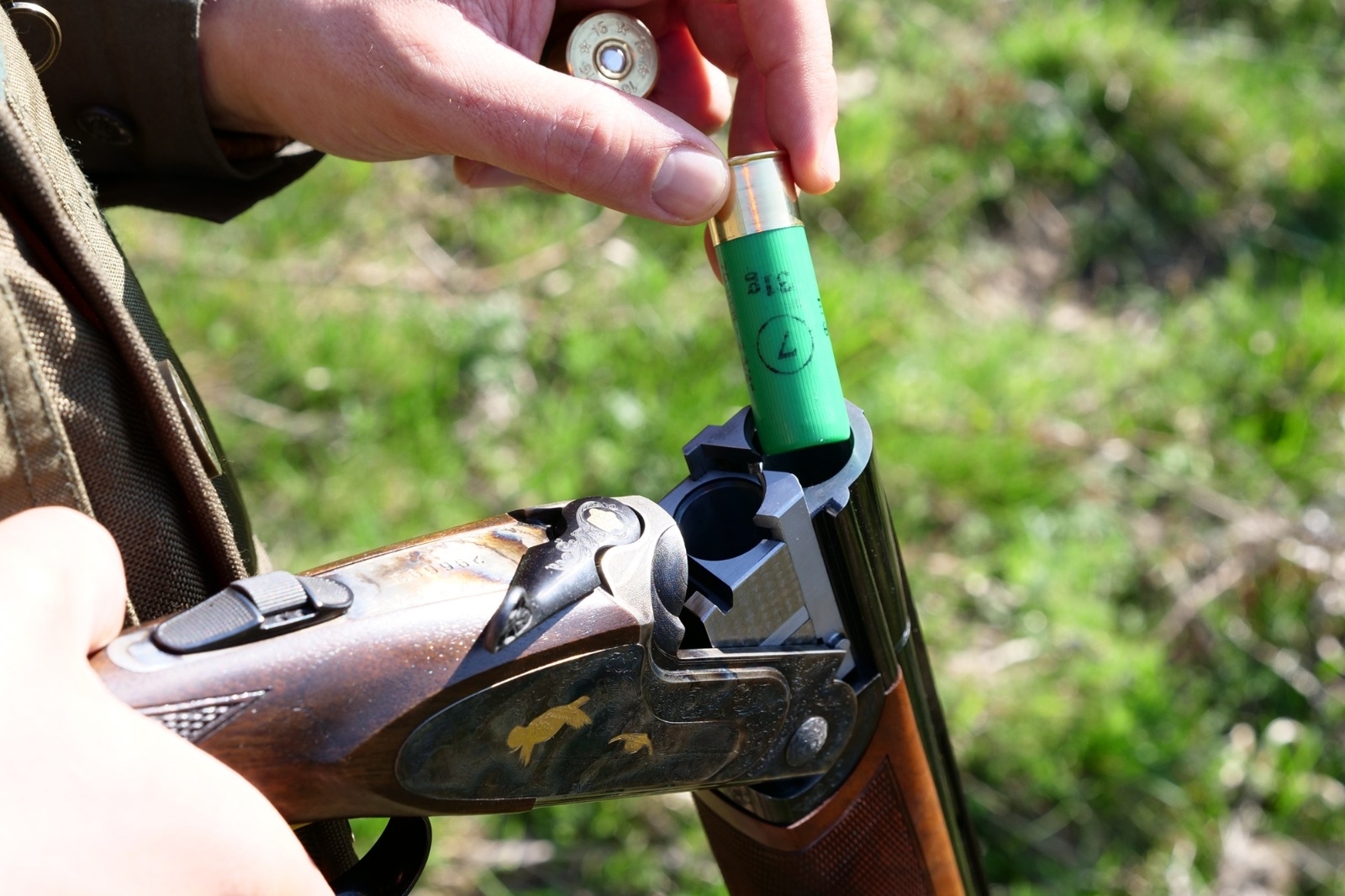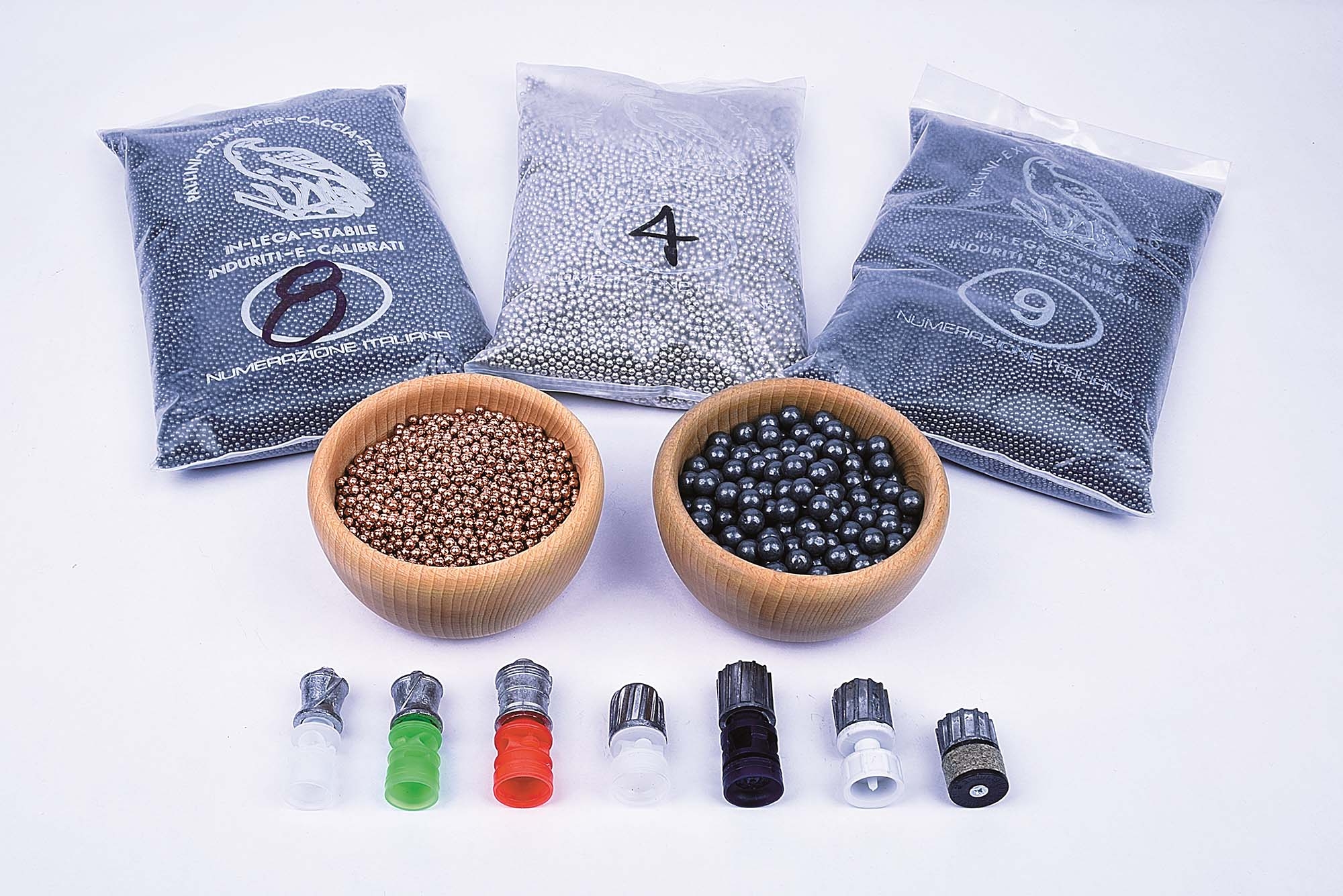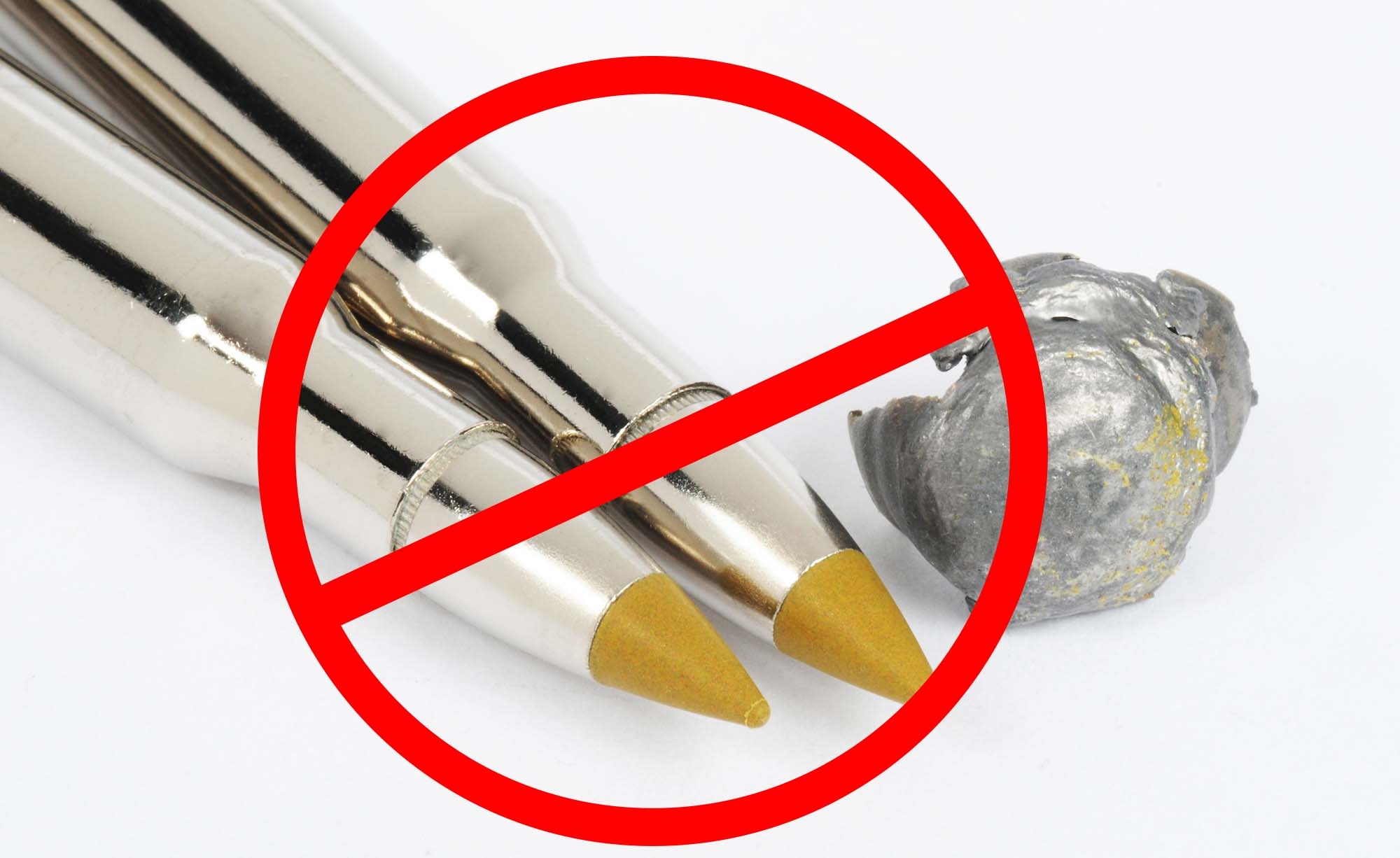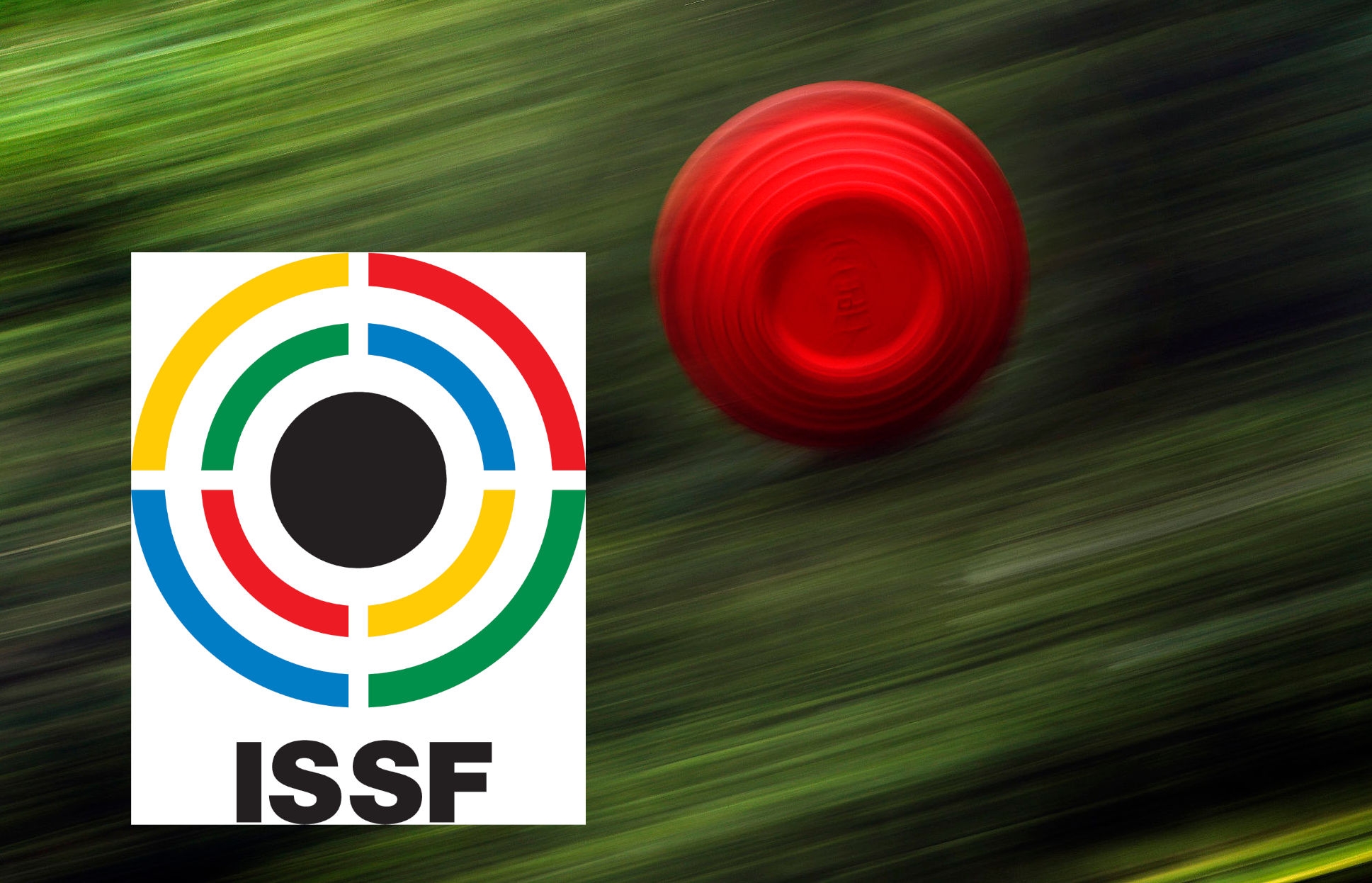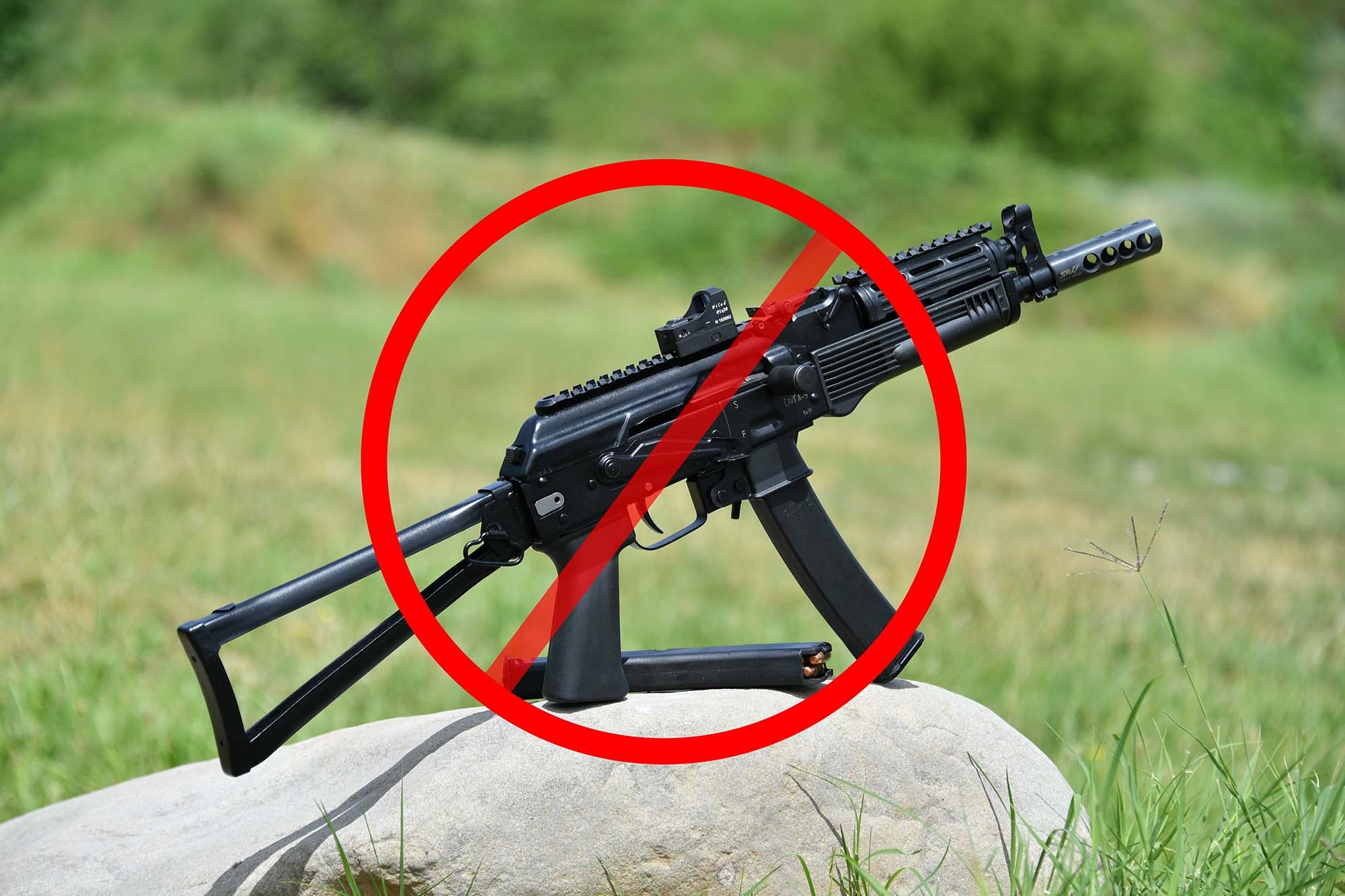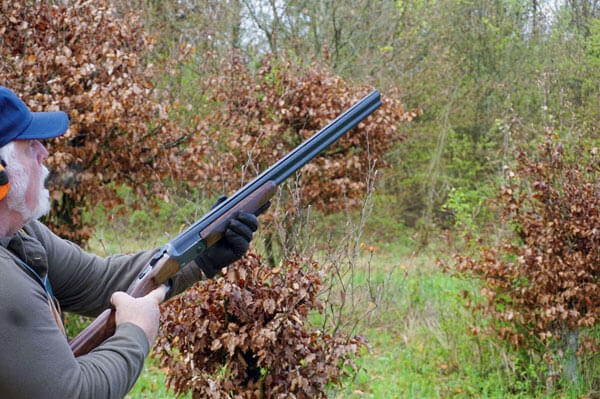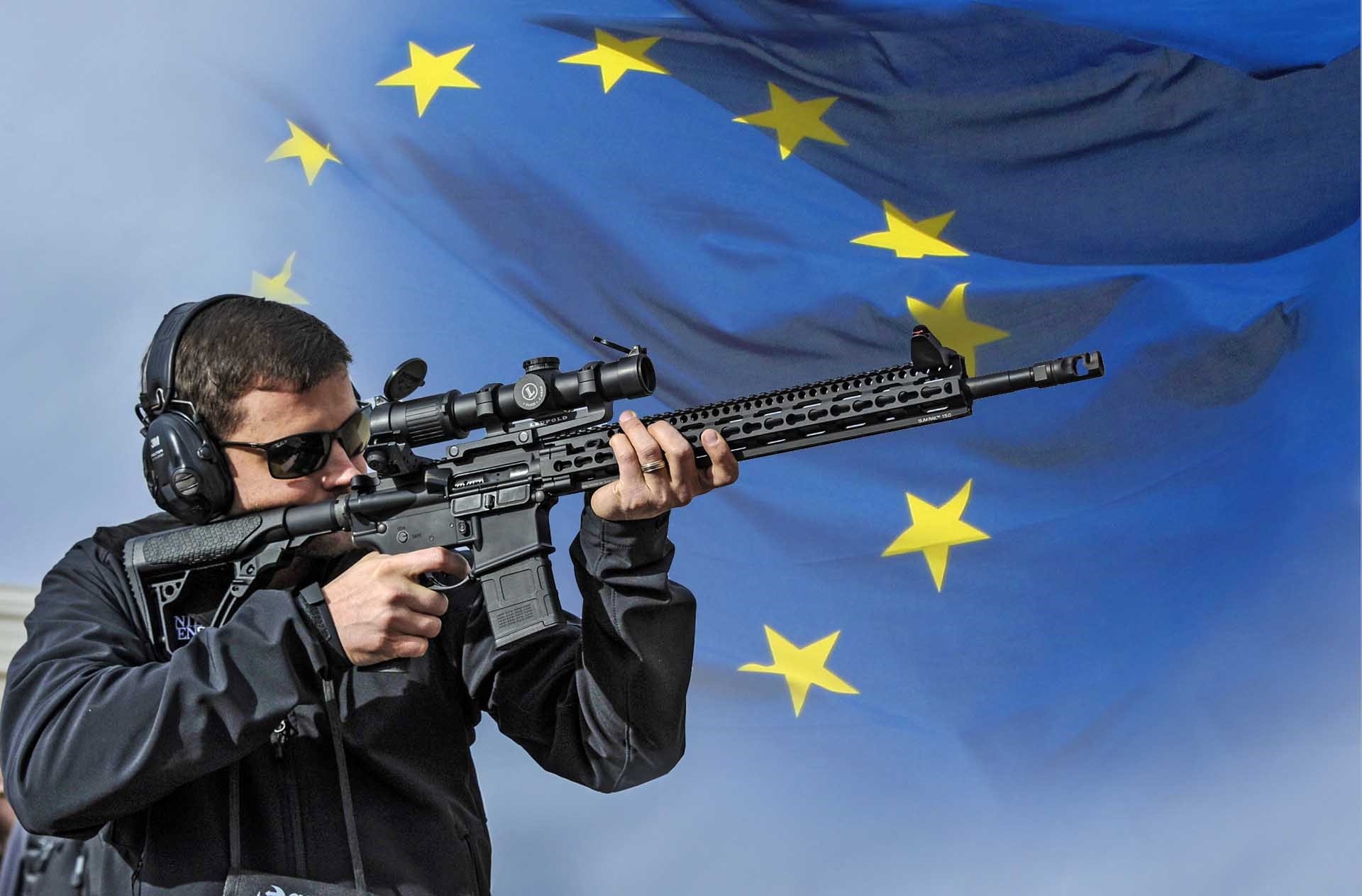The drama could be summed up very simply and aptly in just one sentence: according to the EU Commission, wetlands will be virtually everywhere in future when it comes to the use of lead shot ammunition. With the introduction of so-called 400-meter buffer zones around wetlands (and that means no visible water surfaces) by the EU Commission, many countries are "almost complete wetlands". For example, in the north of Europe.
+++ Read here our January 16, 2020 update on the EU ban on lead shot ammunition +++
In November, the EU REACh Committee had the task of reformulating the EU Commission's proposal to ban lead ammunition in wetlands. Here you will find the reformulated texts, which can be accessed via the links:
These are the most important changes in the new formulation of the EU amendment regulation on the use and possession of lead shot ammunition from January 2020:
- The general transitional period is changed from 18 months to 24 months from the entry into force of the Amendment Regulation
- The buffer zone is reduced from 400 meters to 300 meters, but this does not solve the problem of the definition
- The problematic concept of "possession" of lead ammunition remains unchanged
- "Wetlands" are further described by using the unsuitable RAMSAR definition
Our comment:
Unfortunately, these new formulations of the REACh Committee do not address the critical points of the previous text, such as the use of the RAMSAR definition of wetlands, the notion of possession of lead ammunition and the almost uncontrollable situation for hunter/sportsman and law enforcement officers, the existence of a buffer zone and the insufficient time for enforcement of the restriction. The disaster is continuing because the EU Commission is apparently unwilling to remedy factual errors and ambiguities.
A look at the Ramsar definition of wetlands and a map of Europe:
At present, 2187 areas covering almost 2.1 million km² are protected under the guidelines of the 1971 Ramsar Convention. They are distributed across 168 states (as of July 2014). However, this map does not yet show any 400-meter buffer zones. A cartographic view of Europe with buffer zones is currently not available – and certainly can't be even drawn. This is where the disaster begins: what is a wetland?
But that is just one of many problems. ECHA's entire documentation is over 300 pages long - we want to spare you that at this point.
Just one thing should be mentioned in advance: even the ECHA did not recommend this definition, which the EU Commission is now getting hung up on.
However, one thing is certain: they clearly want to to "force" a ban on lead ammunition in the EU.
Here are the details: If a country's wetlands area is more than 20% according to the new definition, the EU Commission recommends a complete ban on ammunition containing lead shot.
In addition, the proposed ban is not limited to hunters, as one might think, but explicitly includes shooting ranges and thus sports shooters alike.
And if that is not enough for you, let us tell you that they want to do that through legal means, without giving the industry, the associations, the traders or the target groups concerned the chance to manage all this in a reasonable time.
Stakeholders are shocked and describe this initiative by ECHA and the EU Commission as undemocratic and inappropriate, both in terms of its content and basic approach. In addition, there are considerable doubts about the selection and evaluation of the studies used by the ECHA to demonstrate the harmfulness of lead in ammunition. Here on all4hunters.com we had already published the topic of the relevant particle size of lead metal in the assessment of human and ecotoxicity.
Now is the time to hurry. All stakeholders from industry and associations (such as FACE, CIC, AFEMS and many more) are working on detailed statements.
We recommend that you read the statement from RUAG Ammotec (manufacturers of the ammunition brands RWS , GECO , Norma , Rottweil ) to understand how complex, but also how important, it is to understand this prohibition issue because it has the potential to harm our entire industry and our passion in a way that is unimaginable.
This is what you can expect when you take the time to read this dossier with concrete proposals for solutions:
-
General preliminary remarks on the ECHA's approach to the definition of zones for the prohibition of the use of lead shot ammunition by hunters and shooters
-
Consequences of the extended definition of a wetland by the EU Commission
-
Assessment of the consequences of the new 400-meter buffer zones
-
What does "possession / intended use" of lead shot ammunition by hunters and shooters in the newly defined prohibition zones mean?
-
Open questions on system compatibility, safety factors and costs in the interaction between ammunition and firearms with alternative projectile materials
- Practical hunting suitability / animal welfare and ecosystem compatibility of lead ammunition compared to alternative materials
Conclusion: why a general ban on lead shot ammunition in wetlands is not appropriate.
Statement of RUAG Ammotec dated November 14, 2019, to stakeholders: REACh / Ban of lead in wetlands
On 17 August 2018, the European Commission (EU) received the opinion of the European Chemicals Agency (ECHA) on the restriction of lead shot over wetlands.
On 28 October 2019, the EU presented its proposal for the REACh Regulation.
Member States will discuss the EU proposal at the meeting of the EU REACh Committee on 19 November 2019.
RUAG Ammotec expresses its serious concerns on the following topics and offers solutions as appropriate.
We ask you to raise these concerns at the forthcoming meeting of the EU REACh Committee in Brussels on 19 and 20 November 2019 and to call for a new risk assessment and socio-economic analysis of the proposal to counter a general ban on lead in ammunition.
1. General preliminary remarks on the issue of zones of prohibition on the use of lead-containing shotgun ammunition by hunters and sports shooters
In 2017, the European Chemicals Agency (ECHA) of the European Commission submitted a dossier to restrict the introduction of lead shot projectiles into wetlands. According to the dossier, the presence of lead in wetlands poses a serious threat to wildlife.
ECHA has harmonised the definition of these areas with the Ramsar Convention, which defines wetlands as habitats for waders and waterfowl of international importance. In wording: “Wetlands are areas of marsh, fen, peatland or water, whether natural or artificial, permanent or temporary, with water that is static or flowing, fresh, brackish or salt, including areas of marine water the depth of which at low tide does not exceed six metres."
However, ECHA would also like to designate the adjacent areas of these wetlands as "no use zones" (a 400-meter buffer zone) for lead shot in the planned regulation, as there is a possibility that lead shot ammunition fired there may land in the adjoining wetlands.
REACh was adopted to improve the protection of human health and the environment from risks posed by chemicals. REACh stands for "Registration, Evaluation, Authorisation and Restriction of Chemicals".
For some years now, lead shot ammunition has been banned in some European countries from use when hunting beside, on and in the immediate vicinity of water expanses. The planned EU regulation is seeking to extend a ban on the use of ammunition containing lead in these areas to include huntable furred game.
It cannot be contested that this will lead to a number of legal problems for European hunters and shooters. There are also legal problems regarding the scope of the restriction, which goes beyond the original EU request to the ECHA.
Given the new points added to the EU proposal (which have not been adequately taken into account in the opinion of the European Chemicals Agency (ECHA)), we believe that the EU proposal now requires a new risk assessment and socio-economic analysis.
2. Definition of a wetland by the EU Commission
The clear definition of a "wetland area" is a key factor for the feasibility and enforceability of the proposed restriction. In this Regulation, the EU adopts the full definition of the Ramsar Convention for wetlands, which we believe is inappropriate.
Reason:
- From a legal perspective, the Ramsar definition covers all water, including a small puddle or a ditch carrying water at the edge of a field.
- The inclusion of floodplains makes the restriction unclear and uncontrollable for hunters and shooters as well as for law enforcement officers.
- 24 out of 28 EU Member States already have national laws on the use of lead shot over wetlands, but no Member State applies the full Ramsar definition because of the problems involved.
- This extension (of areas designated under the Ramsar definition) is to take place although there is no significant evidence of the risks associated with the uptake of lead by waterfowl that feed outside wetlands in a traditional sense.
- In this context, ECHA's SEAC Committee itself has already pointed out that the use of the Ramsar definition makes it almost impossible to enforce and comply with restrictions in certain types of wetlands (e.g. difference between floodplains, marshes, fens etc. and expanses of land with many smaller, temporary areas of water and/or more or less dry floodplains).
Solution:
In order to make this regulation practicable, proportionate and comprehensible to hunters and law enforcement officers, wetlands should in future be defined as wetlands with visible water. In order to ensure legal certainty, Member States should set uniform minimum sizes of water areas that are worthy of protection.
3. 400-meter buffer zones
The ECHA discussed buffer zones but concluded that they were not suitable for this restriction.
The ECHA's Socio-economic Analysis Committee (SEAC) did not have sufficient information to assess the socio-economic impact of these buffer zones. Therefore, the SEAC has not drawn any conclusion on the impact of the buffer zones in terms of proportionality. The main reason why a buffer zone was not included in the ECHA's opinion was the practical applicability mentioned above.
The fact is that the EU ignored the ECHA's proposal to ban the use of lead shot only in wetlands and called for the additional introduction of 400-meter buffer zones.
This proposal by the EU Commission disproportionately widens the scope of the regulation. In most cases, the shot is not be fired in the direction of the wetlands within the said buffer zone, nor does it posses a range of 400 meters.
The EU Commission's proposal significantly enlarged the prohibition zone compared to the original ECHA proposal, as all discharges of lead shot (regardless of their purpose and direction) will be banned in these zones.
This extension of the EU restriction will therefore requires a new risk assessment by the RAC and a socio-economic analysis by the SEAC.
Buffer zones, in the sense of total prohibition zones, are used only in very few Member States where narrow bans have been introduced in well-defined wetlands with clear (mapped) boundaries.
The overwhelming majority of the current restrictions place responsibility on the shooters to ensure that the lead shot does not end up in wetlands. The formulation "shooting beside, on or in the immediate vicinity of expanses of water" therefore possesses a binding legal effect compared to a 400-meter buffer zone which is not comprehensibly defined.
In this context, the ECHA (as submitter of the dossier) argued that, based on their expertise and local knowledge, it was the hunter's / shooter's responsibility to ensure that no lead shot is introduced into wetlands when firing a shotgun.
The EU proposal also does not take account of the fact that almost every shooting range in the EU, many of which are SMEs (small and medium-sized enterprises), is located within the 400-meter buffer zone. Switching to alternative shot materials in shooting ranges also requires extensive infrastructural work and higher disposal costs, which can endanger the company's existence. To date, no information is available on the number of shooters and the number / locations of shooting ranges situated in the newly defined wetlands of the various Member States. Were this data to be obtained, it could possibly be used to assess the economic impact of the EU proposal. These additional costs have not yet been assessed either by the ECHA or the EU.
This requires a new risk assessment and socio-economic analysis.
Solution:
- Buffer zones should be deleted from the EU proposal.
- As a matter of principle, shooting ranges should not be considered in this context as they are subject to a separate approval procedure anyway.
4. Possession / intended use of shotgun ammunition containing lead
Due to the unclear situation regarding the wetlands to be designated in the future, questions also arise regarding the handling of lead shot ammunition and its control in the areas in question.
The EU evidently does not grasp that the implementation of this demand is impractical and virtually uncontrollable. According to the SEAC, there are serious uncertainties in the interpretation of possession of lead shot ammunition in this context, which still need to be clarified with regard to its intended use. It can be assumed that hunters will also have to cross areas that could be defined as wetlands in the future (Ramsar definition with additional 400-meter buffer zones). Under no circumstances may this regulation result in these hunters being prosecuted for possession of lead shot ammunition within the newly defined wetlands. The circumstance of being in possession of lead shot ammunition is recognised in principle by the ECHA. In the context of hunting, this new provision means that the ban on the use of lead shot is, in practice, extended far beyond actual wetlands, without justification or proportionality being taken into account.
Solution:
In order to find a legally binding and practical solution, a clear definition of the intended purpose (of the lead shot ammunition carried by the shooter) is required for use within the newly defined wetlands. In practical terms, legally binding checks would only be possible at the moment of discharging the firearm ( in flagrante) .
5. System compatibility, safety factors and costs in the interaction between ammunition and firearm
System-compatibility, i.e. the interaction between the ammunition with the immediately adjacent components of the firearm (barrel) must be viewed critically due to the higher hardness of all substitutes in contrast to lead. The greater hardness of the substitutes leads to an increased strain on the barrels and the locking of the firearm systems. The higher mechanical stress leads to a faster material fatigue and wear on the firearm barrels.
The greater degree of hardness presented by alternative ammunition materials also poses a significantly increased safety risk in terms of projectile trajectory and possible rebound. This could result in endangering the shooter as well as uninvolved third parties.
In this context, it should also be pointed out that some EU Member States are also members of the CIP (Permanent International Commission for the Proof of Small Arms and Ammunition).
Members of the CIP have committed themselves, through international treaties, to the mutual recognition of test marks and the binding observance of a common set of rules. This means that no civil firearms and ammunition which do not comply with these regulations may be placed on the market in or from of the area of the jurisdiction of the CIP countries.
The EU proposal (point 12) states that the costs of the proposed restriction would be borne mainly by hunters and sports shooters and that the cost increase would be reasonable for them.
The EU is mistaken in claiming that almost all EU Member States have an "infrastructure for testing cartridges" .
This betrays a complete lack of understanding of the problem: it is the shotguns that need to be tested for use with alternative materials for ammunition, not the ammunition itself. Furthermore, the question still has to be raised: which Member States have the necessary infrastructure to test shotguns?
By using the Ramsar definition with additional 400-meter buffer zones, a much larger proportion of hunters and sports shooters are included in the scope of the restriction. The scale and impact on millions of European legal firearms owners have therefore not been adequately taken into account by the ECHA or the EU.
Does the European Commission know how many hunters and sports shooters will be affected and how many shotguns will have to be modified or replaced?
The EU even proposes that Member States with more than 20% wetlands completely ban the use of lead shot. However, this is not sufficiently explained and justified in terms of the impact and scope of the EU proposal.
Solution:
Since this ban
de facto
leads to the unserviceability of millions of shotguns and thus to a quasi-expropriation, this situation requires a new risk assessment and socio-economic analysis.
6. Practical suitability for hunting / animal protection as well as the ecosystem compatibility of lead in comparison to alternative materials
The leaded materials for hunting ammunition, which have been tried and tested and optimised for decades, ensure a humane killing effect in hunting practice. Other metals have proven to be less effective and problematic in the interaction between firearms and ammunition.
RUAG Ammotec therefore believes that the current situation does not adequately cover the requirements of a humane killing effect in hunting practice with unleaded ammunition.
This demand for humane killing is enshrined in the law of many European countries.
The long-standing discussion about replacing lead in hunting ammunition has led to numerous technical studies.
Comparative studies by the University of Munich (TUM) have shown, however, that the alternative shotgun and ball ammunition available on the market have, from the perspective of ecotoxicity, significantly more questionable effects than metallic lead, especially in wetlands.
A toxicity test was carried out on the key organism for these wetlands, the large water flea ( Daphnia magna ). In these habitats, the large water flea holds an important key position in the food chain of the relevant ecosystems. The studies revealed that the zinc and copper ions released by the alternative ammunition materials have a highly toxic effect on this organism, and mortality rates of up to 100 percent were measured in comparison to the control group. In the solutions contaminated with lead shot, on the other hand, there was no mortality rate significantly different from that of the control group.
RUAG Ammotec is therefore critical of a blanket ban on hunting ammunition containing lead. Especially since current research has not yet sufficiently demonstrated the effects of alternative materials and their alloys on the environment
Solution:
As long as there are no at least equivalent solutions, metallic lead shot must continue to be used as a material for ammunition.
In addition, the consequences of a blanket ban on lead are not foreseeable and might develop into very serious challenges that jeopardise important aspects of hunting, animal welfare, species protection and environmental protection.
RUAG Ammotec, the largest European ammunition manufacturer, is therefore working on an approach that covers all aspects of hunting in bodies of water and wetlands. For instance, the use of tin-plated lead shot would be a possible variant, since metallic tin, as a surface coating, is harmless to human health and ecotoxicology – even in larger quantities – and the advantages of metallic lead in terms of killing effect, system compatibility and secondary risk could continue to be exploited without change. In terms of ecotoxicology, tin is much safer than copper, zinc or nickel- /chromium- and plastic-coated soft iron, for example.
Quite evidently, the EU Commission has simply ignored all of these facts up till now!
7. Conclusion
It must continue to be possible to benefit from the positive properties of lead as a material for hunting ammunition. From a technical point of view, a complete ban, in the sense of the relative merits of different products, would currently not serve any purpose. This result is corroborated by various investigations and scientific studies.
In addition, there are still many unanswered questions in regard to the alternatives:
-
Is the effectiveness of alternatives from the perspective of animal welfare and applicable animal protection laws also ensured within the states that are members of the CIP (killing effect)?
-
Does the use of alternatives comply with applicable legal principles in all countries (e.g. CIP)?
-
Is the safe use of alternative ammunition in existing firearms ensured (system compatibility)?
-
Are there concerns about increased risk potentials due to the use of alternative materials (e.g. rebounds)?
-
Is consumer protection adequately ensured for the consumption of animals shot by alternative ammunition and for the quality of game (food quality, toxicology)?
-
Which direct or indirect toxicological effects do alternatives available on the market have on the environment (animal, plant and species protection)?
-
Are there studies on the ecotoxicity of alternatives?
- What are the criteria for assessing any alternative materials?
We strongly believe that this opinion should follow the EU principles of “better regulation” in order to ensure that it is proportionate to the level risk and comprehensible for hunters, shooters and law enforcement officers.
At present, the dossier is very ambiguous, disproportionate, discriminatory and contains numerous errors.
We will keep you up to date here at all4hunters.com.
Here you will find a compilation of links that we have published so far on lead in ammunition:


